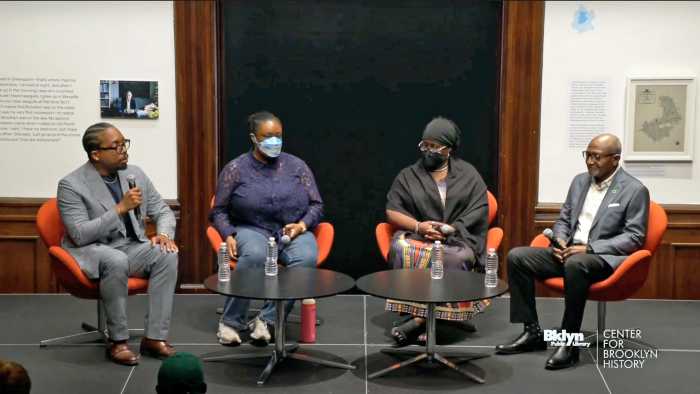Houghton Miflin
$23, 229 pages
A Father’s Burden
Dale Peck evokes the hopelessness of an earlier generation, and the estrangement of today
The desperation and hopelessness one feels while growing up with an abusive mother and an alcoholic “good-for-nothing” father is vividly recounted in Dale Peck’s fourth book, “What We Lost,” a haunting memoir based on the true story of his father’s childhood growing up in the 1950s on Long Island.
The book is so personally written that at times I forgot which Dale Peck I was reading about; the father or the author. Peck is a prolific writer and his earlier novels, “Martin and John,” “The Law of Enclosures,” and “Now It’s Time to Say Goodbye” have all been praised.
In “What We Lost,” we are introduced to Dale Peck Sr., or the boy as he is referred to throughout the first part of this story. The boy has a horrific time escaping the neighborhood bullies who beat him on a daily basis after school. Images of Matthew Shepard clearly come to mind in a passage describing the boy being tied to a fence post in the Pine Barrens, a protected national park, as the older bullies hold a switchblade up to his throat and threaten to cut off his tongue and fingers and kill him if necessary.
Peck very artfully describes the absolute hopelessness of the situation and any gay person that has been in this situation can surely identify with that all-consuming sense of fear one gets in the pit of their stomach when confronted with such unprovoked hatred. He writes: “The threesome’s obsession with the boy was inexplicable, coming and going on a schedule he never could predict or parse. There had been no singular incident to start it off, nor did their altercations seem to have any shape or goal. It was simply a pitstop in their daily routine, the way some people walk to the refrigerator and stare into it, letting the sight of food tell them whether they’re hungry for a glass of milk or a baloney-and-cheese sandwich.”
Not only does the boy have to avoid these bullies every day, but he must also endure a mother who beats him with a hose that’s connected to her washing machine. She makes sure the sprocket hits the most vulnerable parts of the boy’s body. She berates him and tells him in no uncertain terms that he is the only one of her children that she regrets having.
One cold winter’s morning, in an effort to save the boy from being sent to a military school, Lloyd Peck, the boy’s father, wakes him from the bed that he shares with multiple siblings, all from different fathers, and takes the boy for a drive to upstate New York where he literally dumps him on a dairy farm. The farm is owned by Wallace Peck, the boy’s uncle, and it is on this farm, away from all of the humiliations that come with being dirt poor, that the boy learns about the Pecks’ family secrets and what has driven his father to give up on life.
As the boy endears himself to his uncle and his Aunt Bessie, who create a loving, if not stable environment, he learns how to milk cows and what kind of man it takes to run a farm. He becomes a long-distance runner at school, winning medals, and earns a high school letter for his jacket. Life couldn’t be happier for him.

Then, 18 months after his father’s abandonment, the boy’s mother shows up and demands his return to Long Island. The boy must decide in panic-driven minutes whether to stay or leave and is given ultimatums that make whatever he decides regretful.
Moving into Part 2, we are abruptly taken into the present. It is a jarring adjustment and does not transition well when juxtaposed against the bleakness of Part 1 of the narrative. The boy has now grown into Dale Peck Sr., and lost is the empathy and emotion that was felt when he was just referred to as “the boy.” He has morphed into a talkative, old man, with a son, aptly named Dale Peck. We meet both Dale Pecks in this section and although it’s not an unwelcome meeting, it seems entirely disconnected from the first part of the story, despite the connecting plot line.
Although Peck alludes to what his relationship is like with his father, it’s not as detailed and full-on as the previously described father/son relationship in the first part of the book. I wasn’t quite sure if the Dale Pecks’ stilted relationship in this section was due to the father’s haunted past or to a gay person’s feelings of estrangement in general. Perhaps it was a little of both, but whatever it was, more could have been revealed. Peck gives so much vivid detail and imagination in the first part of the book, so much to empathize with and to feel, that the last chapter does not satisfy.
That should not keep one from reading this book. More than once I put it down, because of memories from my own childhood growing up in rural Long Island during the same time period, and wept. Peck is a writer to be taken seriously; he has something to say as well as something to write about.
We also publish:

































